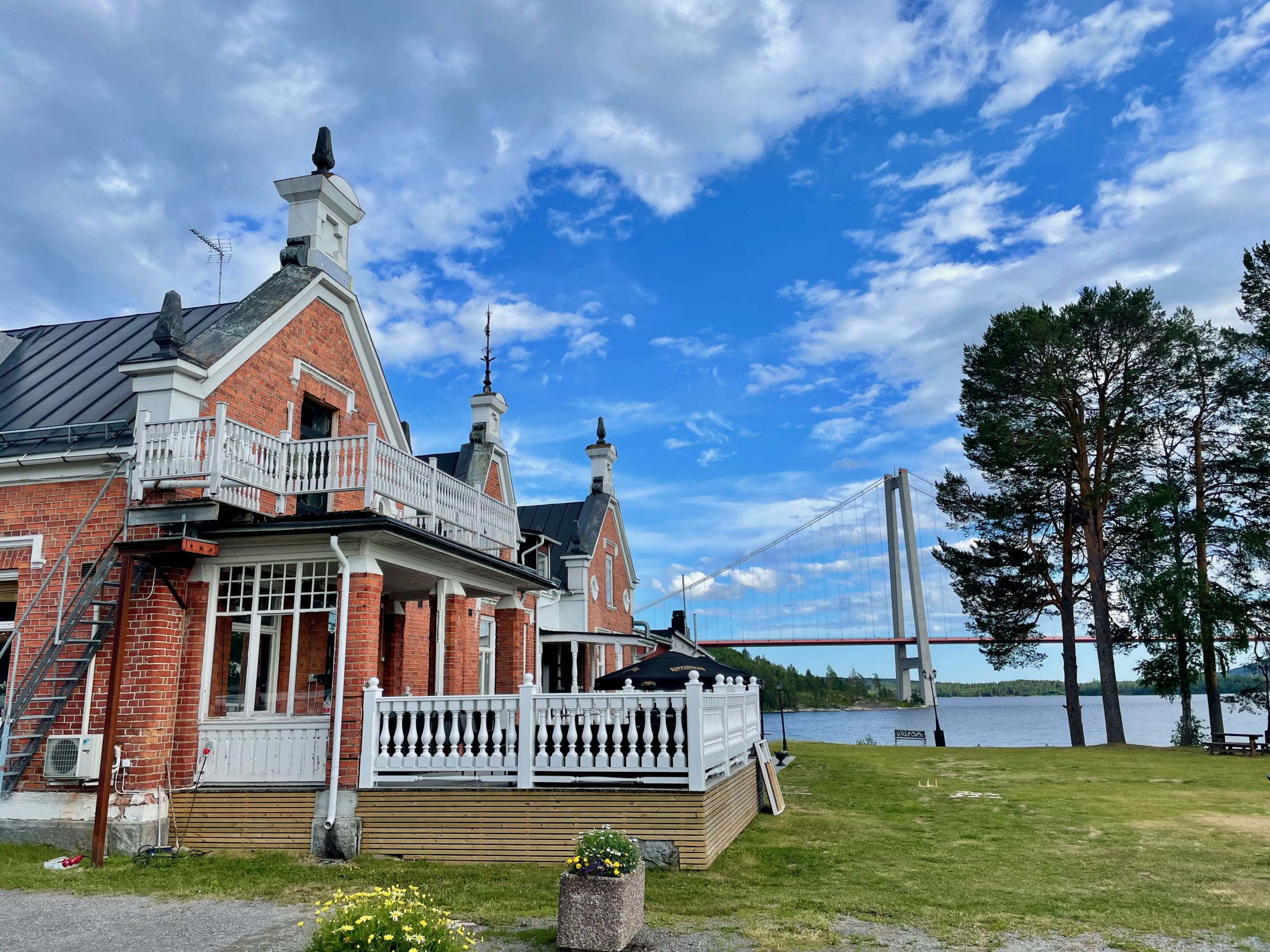After a few days travelling north, we turned east. On the way to Örnsköldsvik we stopped at the Thai Pavilion and the Deadfall. You can read more about them in our second post, which you can find here here.
Örnsköldsvik
The rain was pouring down in Örnsköldsvik, so we didn't really feel like spending more time than necessary outdoors. We took a quick tour of the town before checking in at the Elite Plaza. The hotel was located down in the old industrial harbour and had beautiful views of the water. Like all chain hotels, everything was fresh but at the same time a bit clinical and impersonal.
During a quick walk in the surrounding area we noticed that there are lots of nice restaurants and bars in the harbour area. We had spearheaded the city's Italian restaurant but unexpectedly it turned out to be fully booked and that in combination with the weather made us decide to eat at the hotel's own restaurant. We ate fresh sausages for the main course and although it was not the most advanced dish of the trip, it was still really good. It may sound like we are a bit spoilt but on our tours there is often a great focus on finding the best restaurants and it can be nice to alternate with some regular food as well. Sometimes you are simply more hungry for Sibylla than a tasting menu!
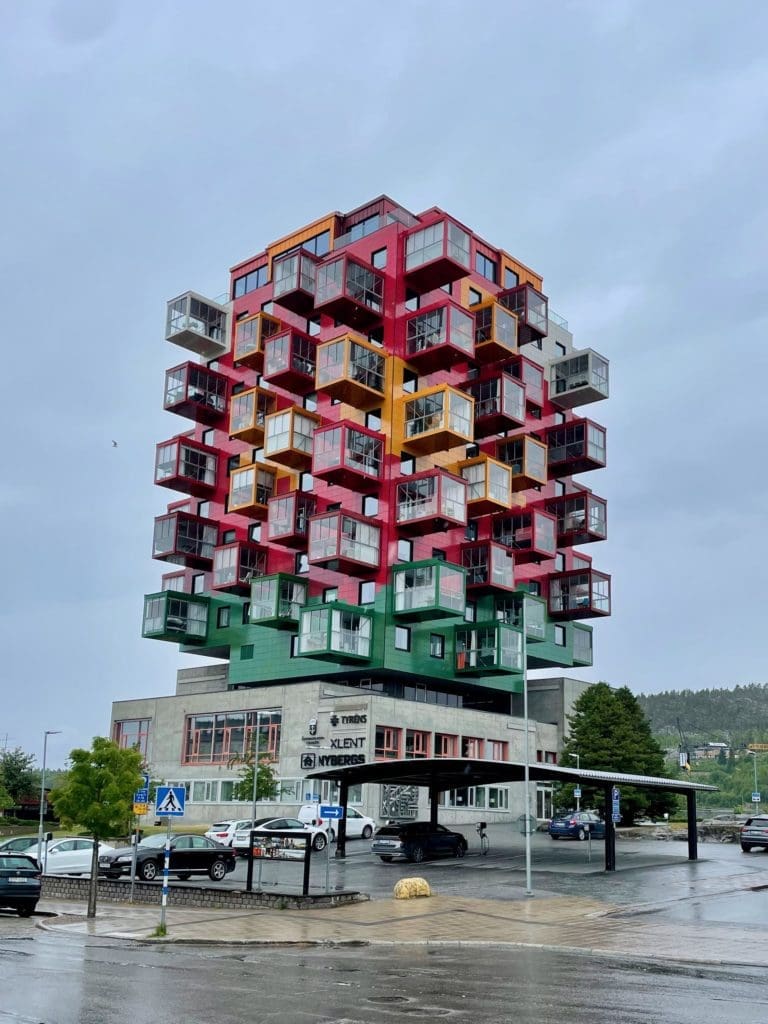
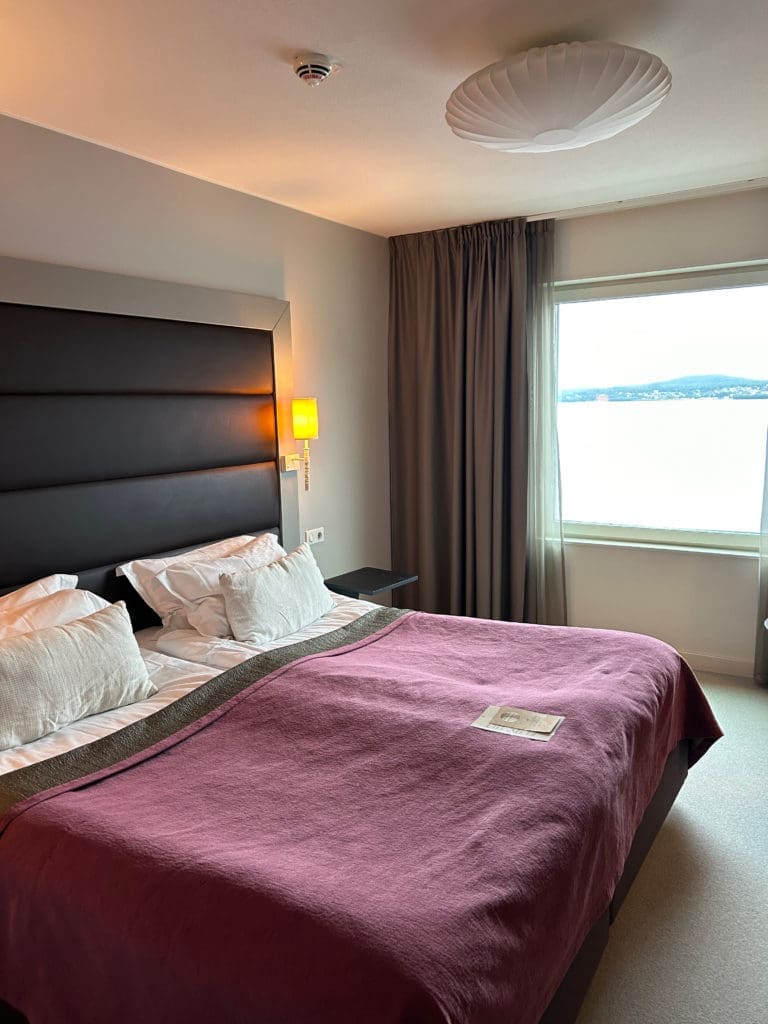
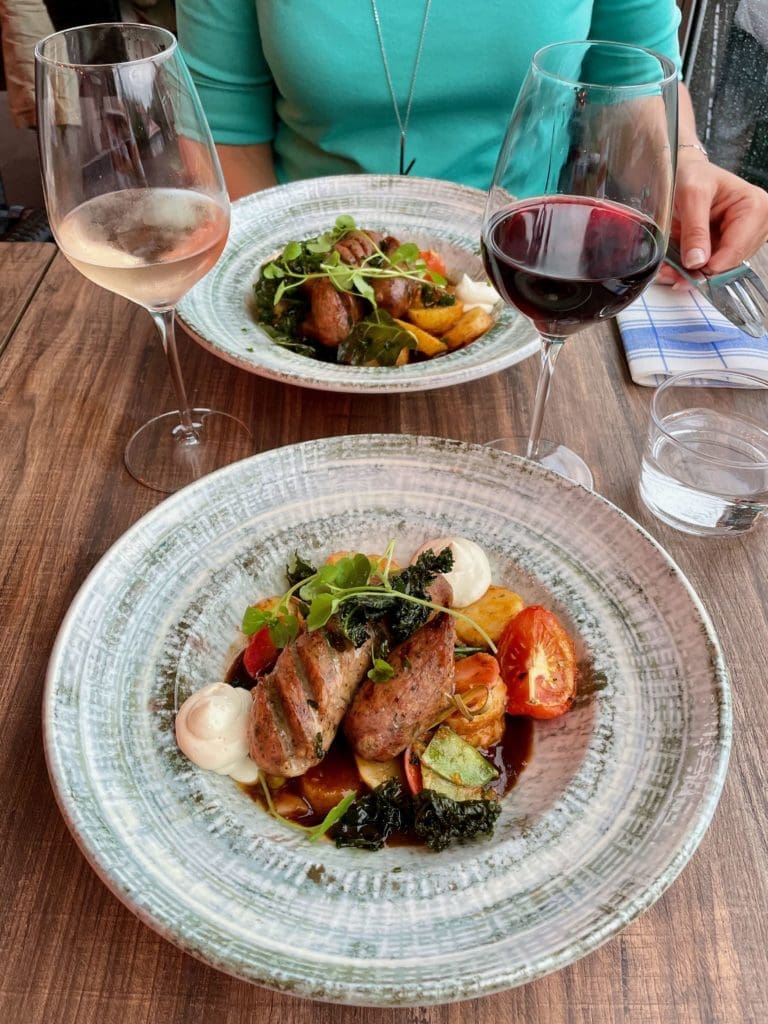
We continued south along the High Coast and it really is a beautiful route with lots to see. There are Skuleberget Nature Reserve with dramatic mountains and deep gorges. Another little gem was Ulvön, which we tell you about in a separate post. In the category of odd experiences, there is Mannaminne, a unique museum of "all-round art". You can read our post about the museum here.
Ullånger
After all the experiences, the stomach began to rumble. We then headed towards Ullånger and Mjällom's Thin Bread. You've probably seen their flatbread on deli shelves or tasted it in one of the many restaurants that offer it as a pre-meal appetiser. In addition to their production, they also have factory sales and a very nice delicatessen that focuses a lot on locally produced products.
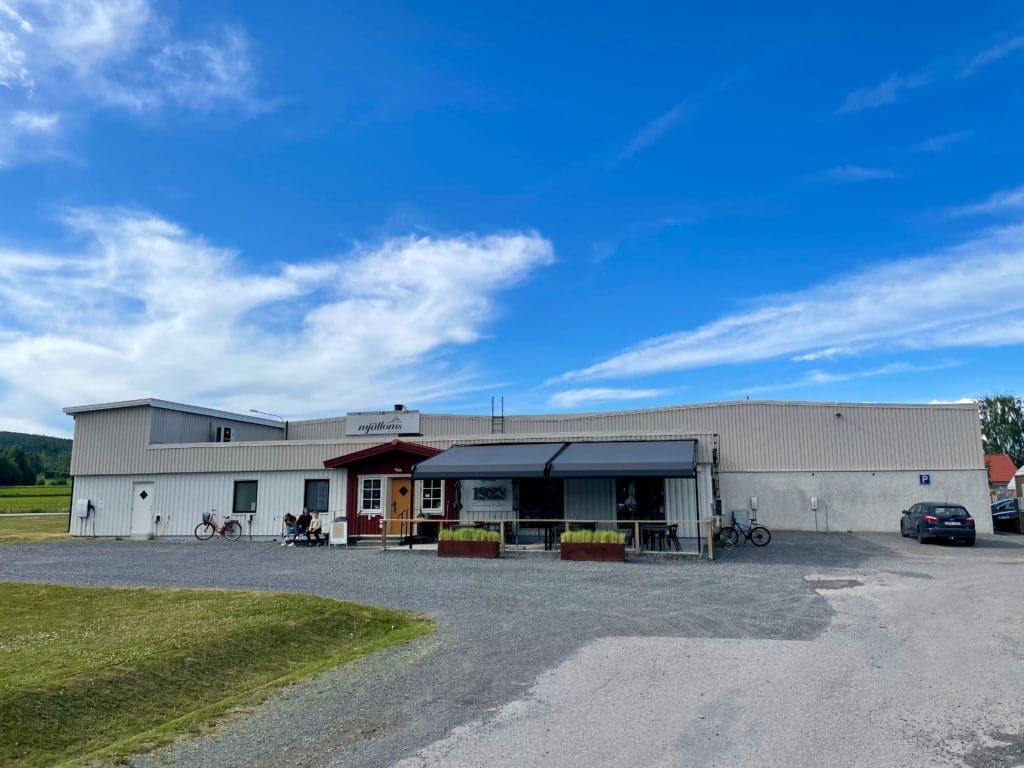


High Coast Bridge
Equipped with various delicacies, we travelled on to the next stop, Hornöberget. When coming from the north, you turn off just before the Högakusten bridge and follow the signs to Hotell Höga Kusten. There is a large car park but also a trail centre and some craft stalls.
On the mountain there are a number of scenic hiking trails with wonderful views. They are 1.5, 3 and 7 km long and all start from the hotel. A bit into the trail we stopped for a cosy picnic.
The bridge itself is an impressive construction. It was inaugurated as recently as 1997 and was modelled on the Golden Gate. When it was built, it was the 11th longest span in the world at 1210 metres and still ranks an honourable 21st.

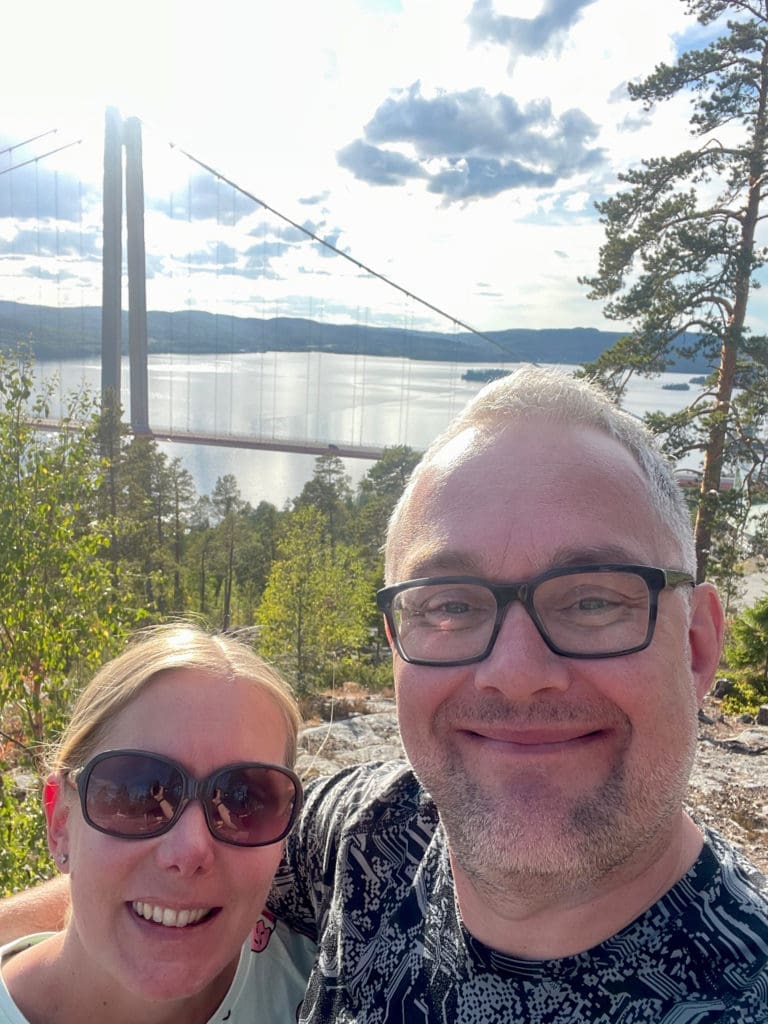
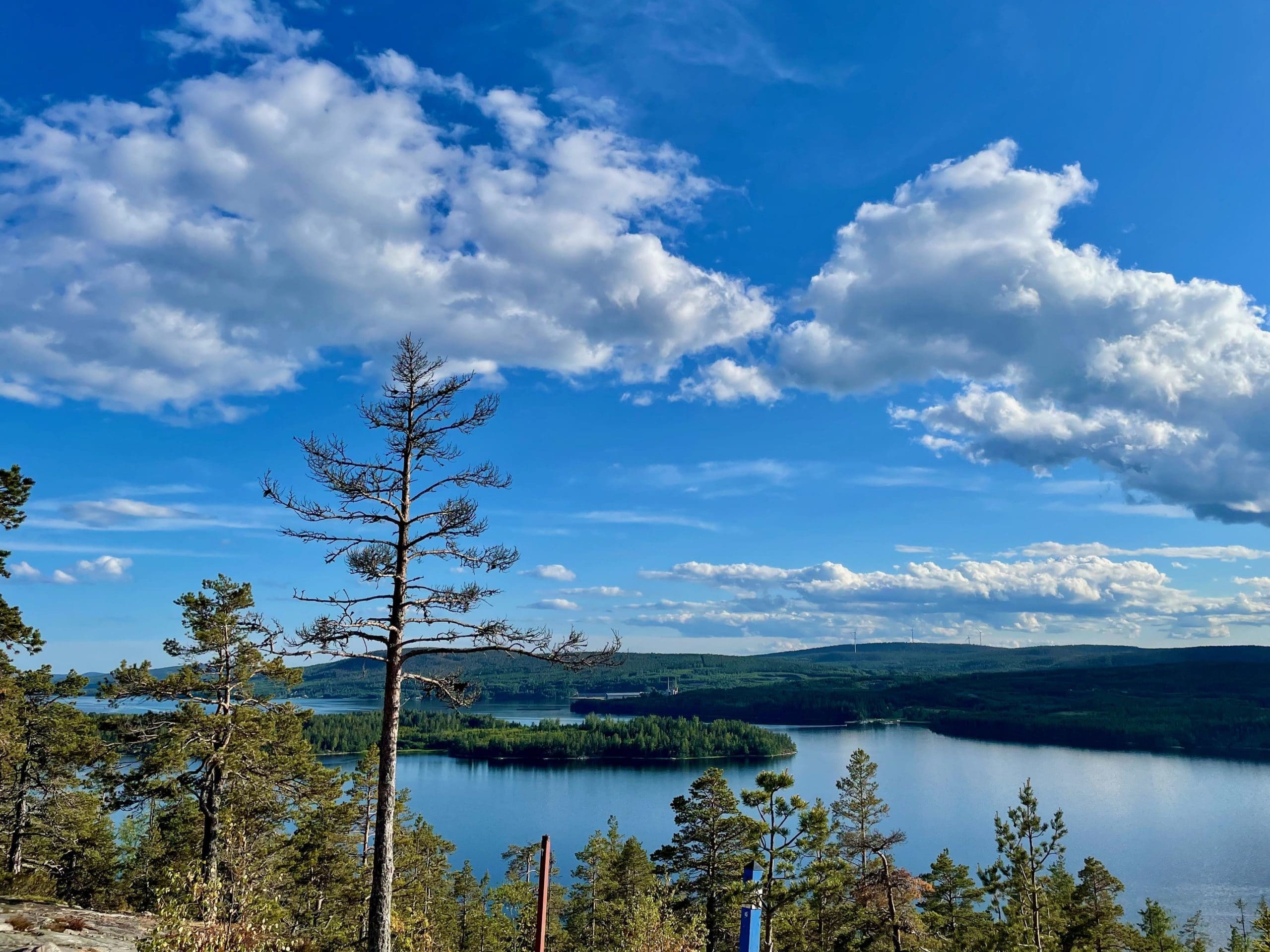
Björkudden
We sat and cuddled a little too long so we only had time for a short hike but it was still nice to move after sitting in the car. After our tour we went on to our hotel, Björkuddens Hotel, which is located on a small headland overlooking the bridge. It is a little smaller and more cosy than the more popular Hotel Höga Kusten. The rooms were of the simpler kind but had nice views of the water. They also had a nice breakfast and when the weather allowed you could eat it in the garden. The starting image in the post is taken from Björkudden.
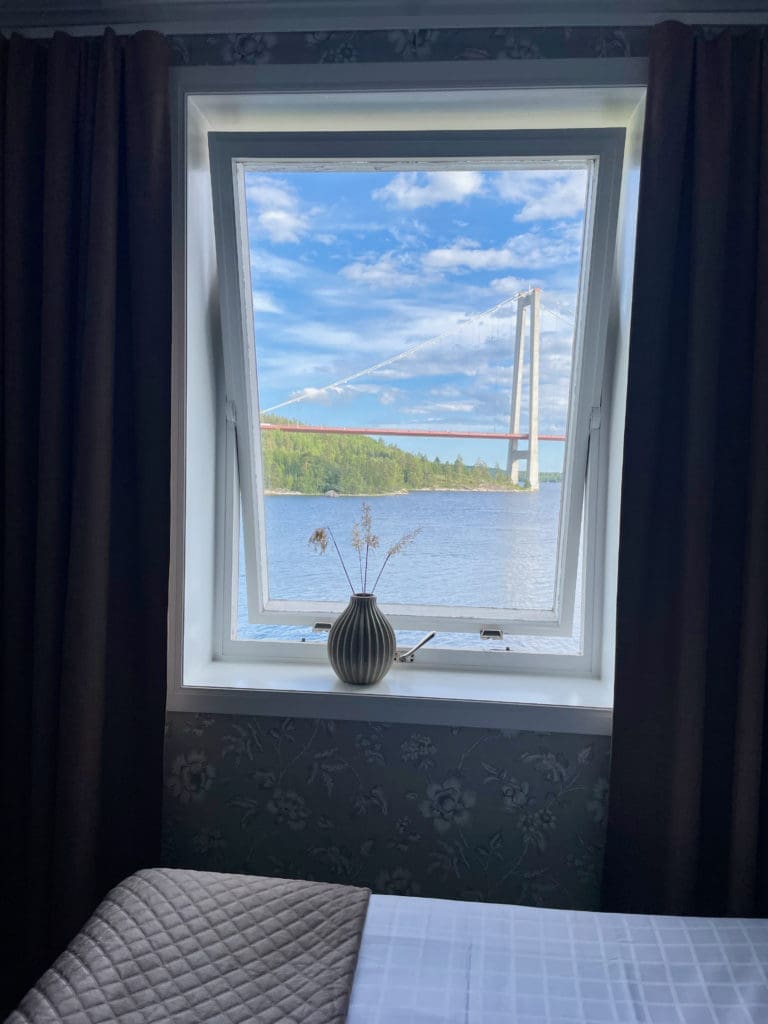
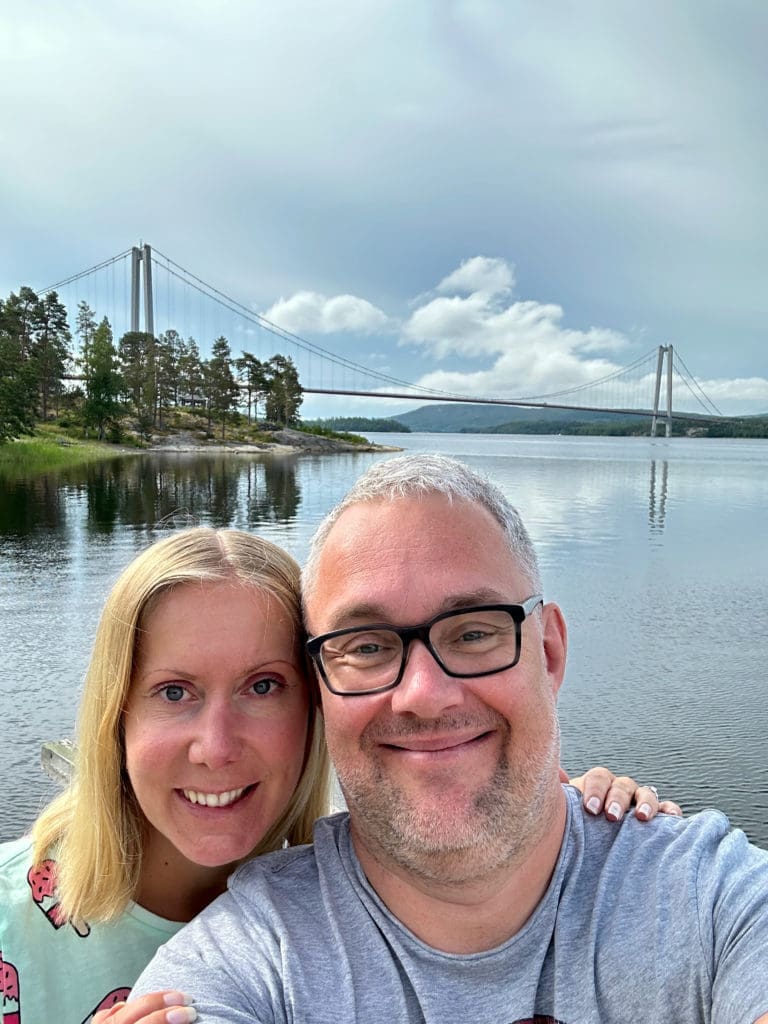
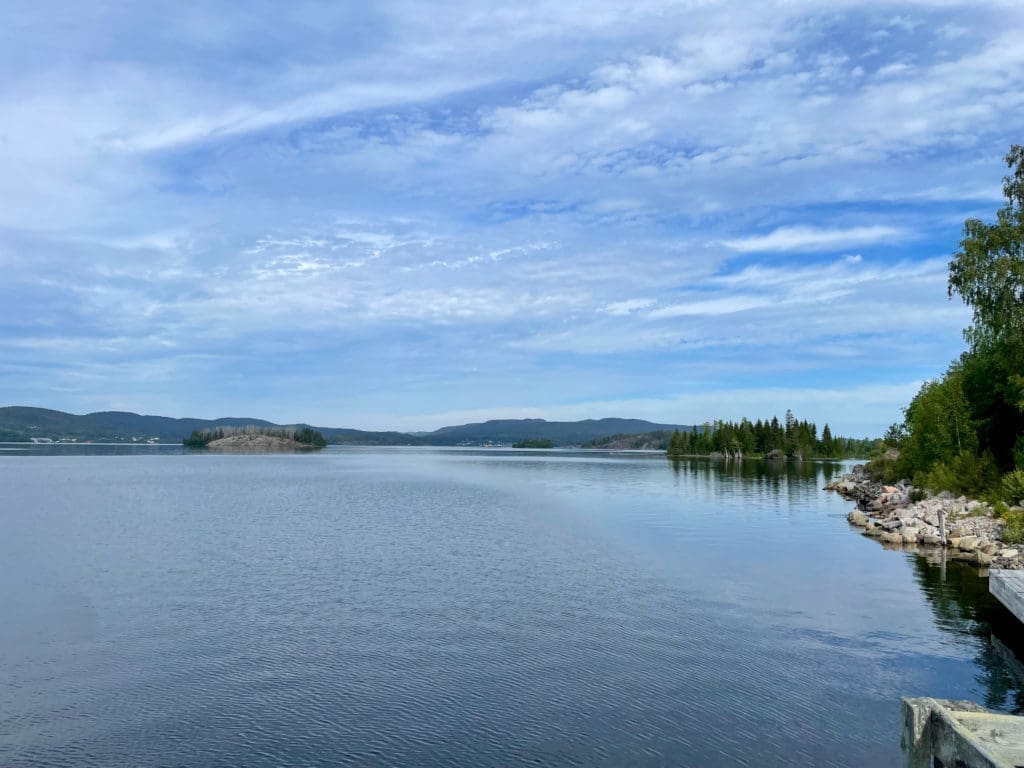
Härnösand
After a good night's sleep and an invigorating breakfast, we moved on. The next stop was Härnösand which we did not know much about. It turned out to be a city with both magnificent houses and good restaurants.
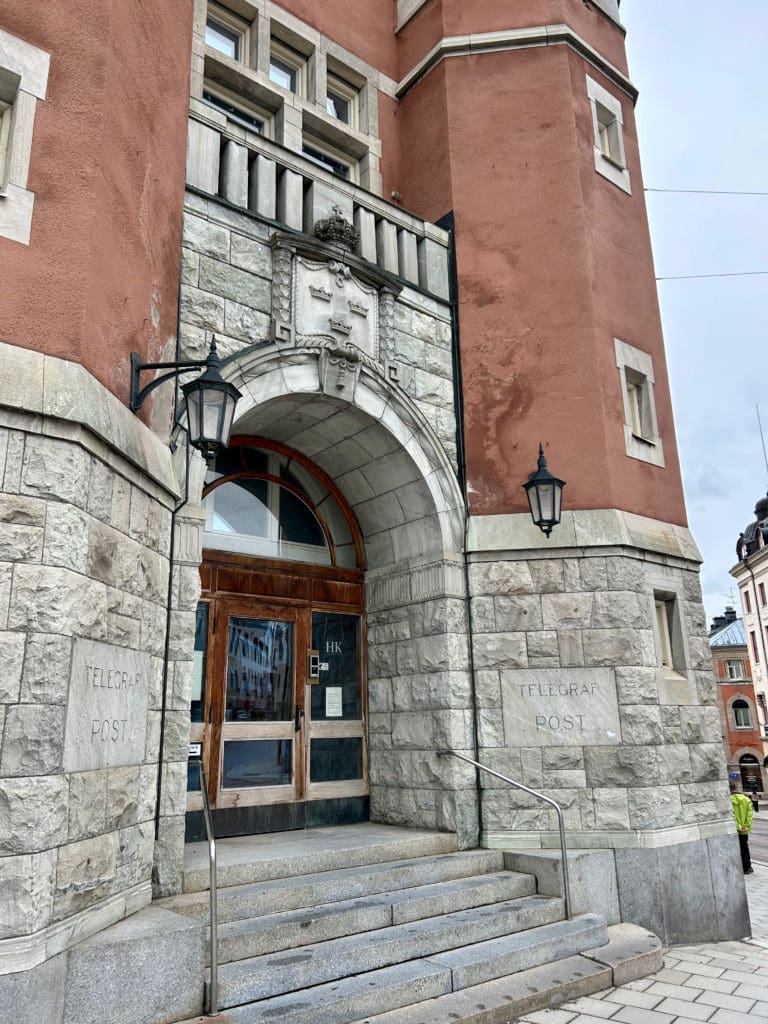

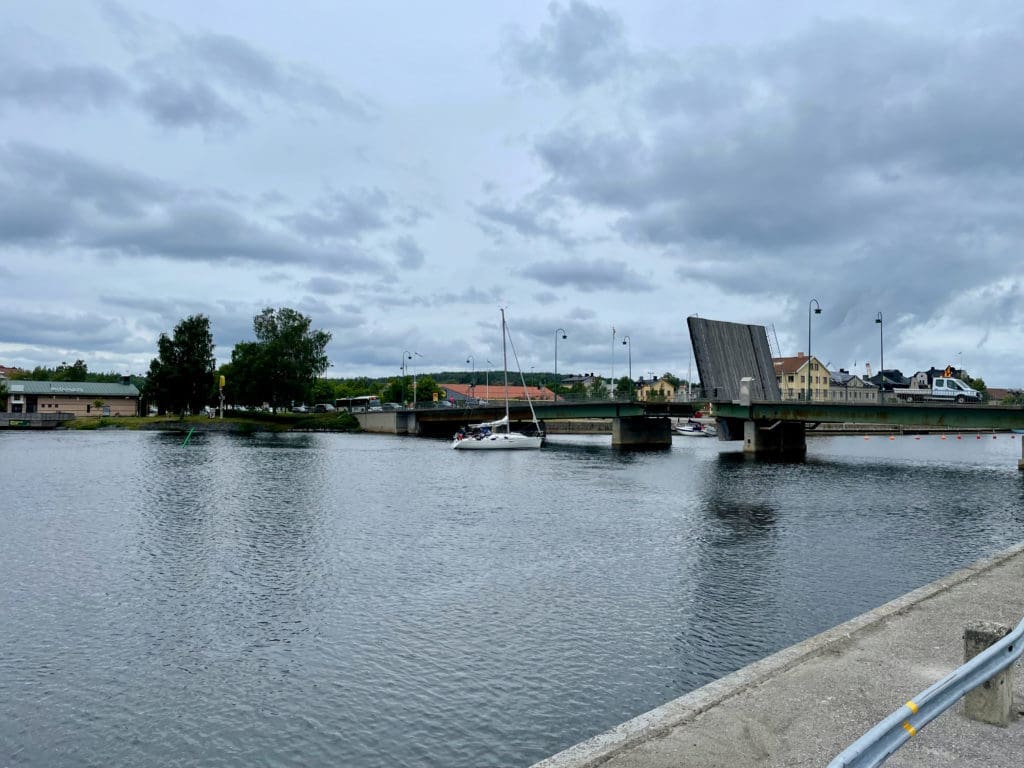
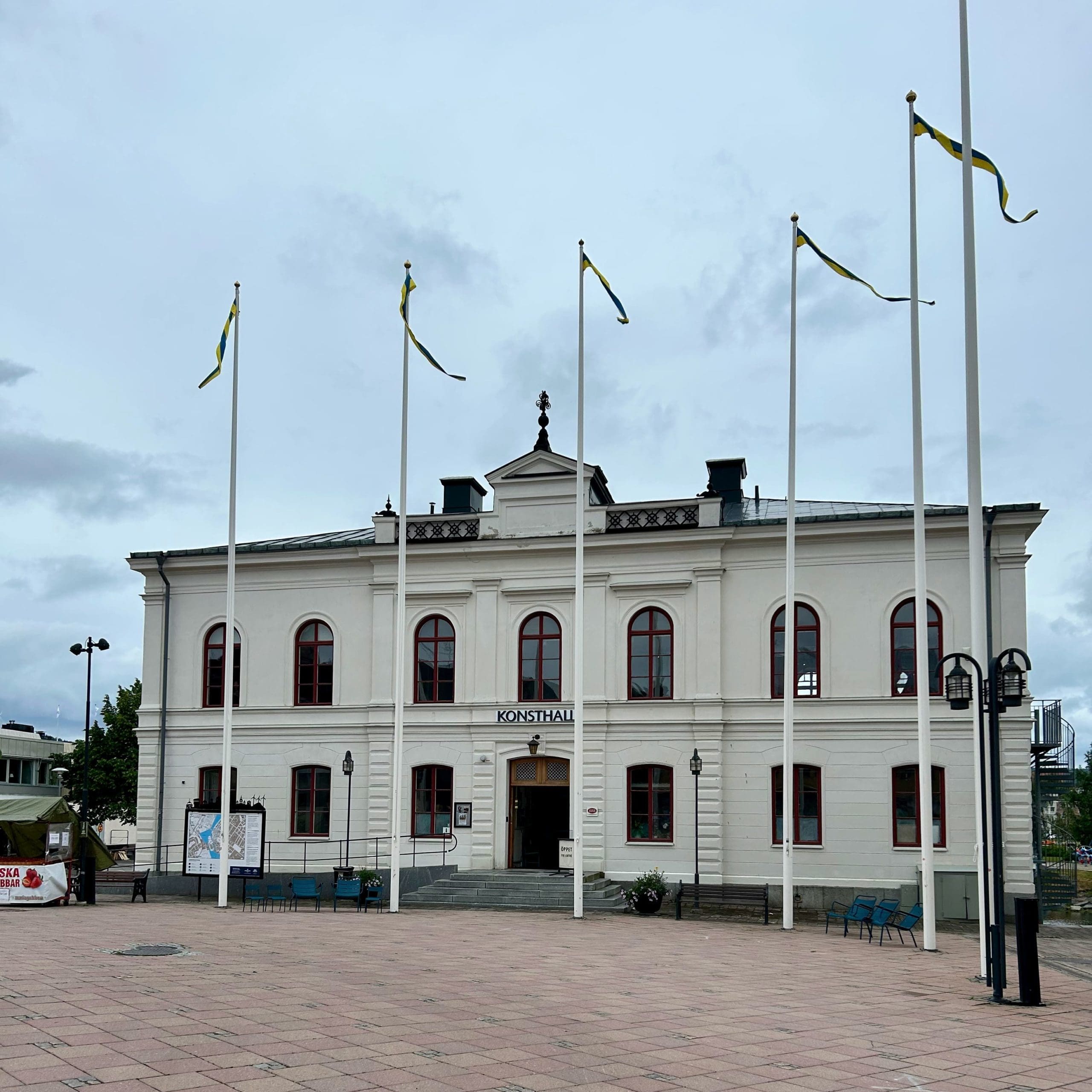

After much deliberation, we ended up on the Engströms Food & Deli, where they served an excellent Bibimbap. In addition to the restaurant, they also had a café and a delicatessen. Very nice!



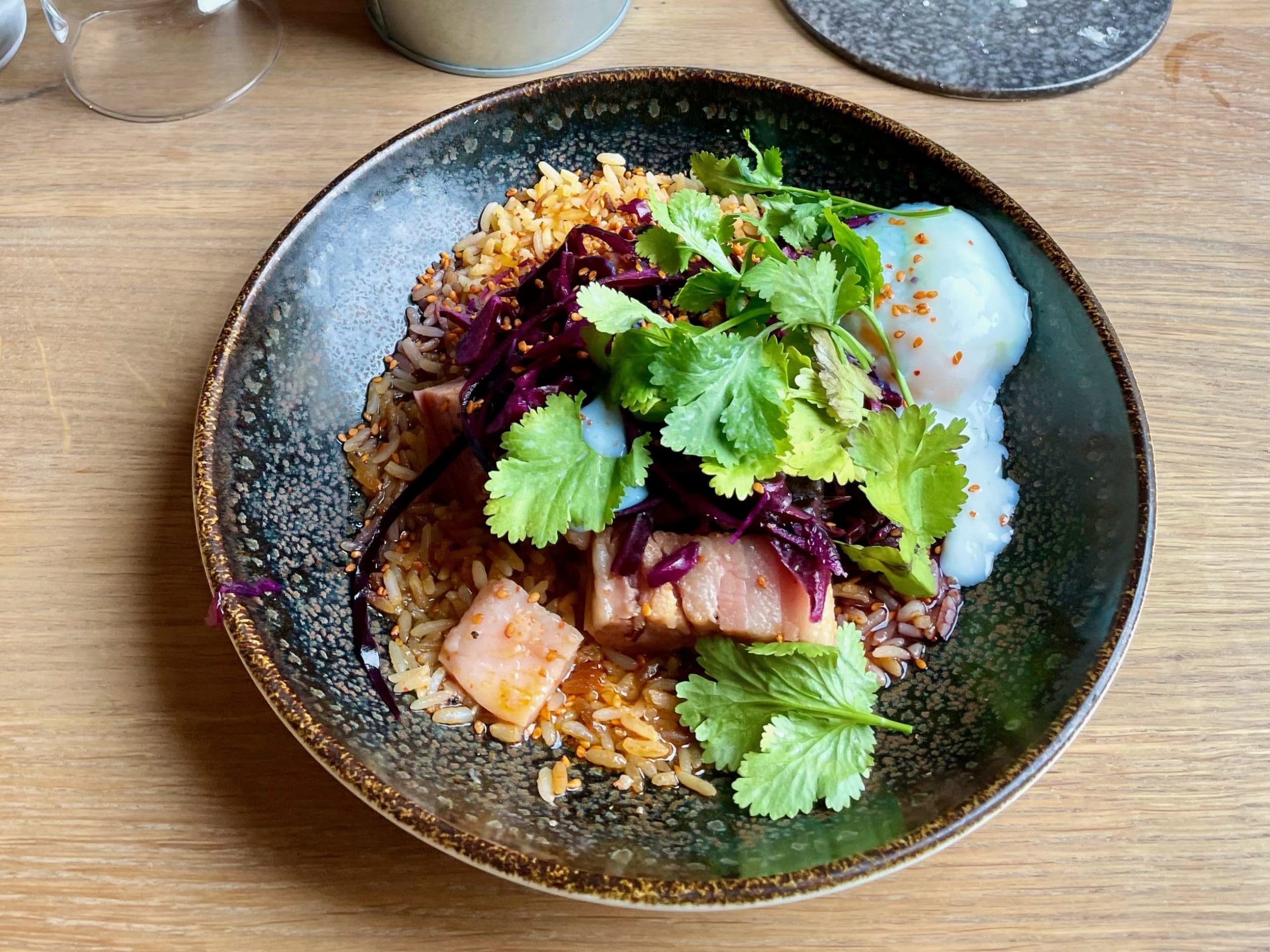
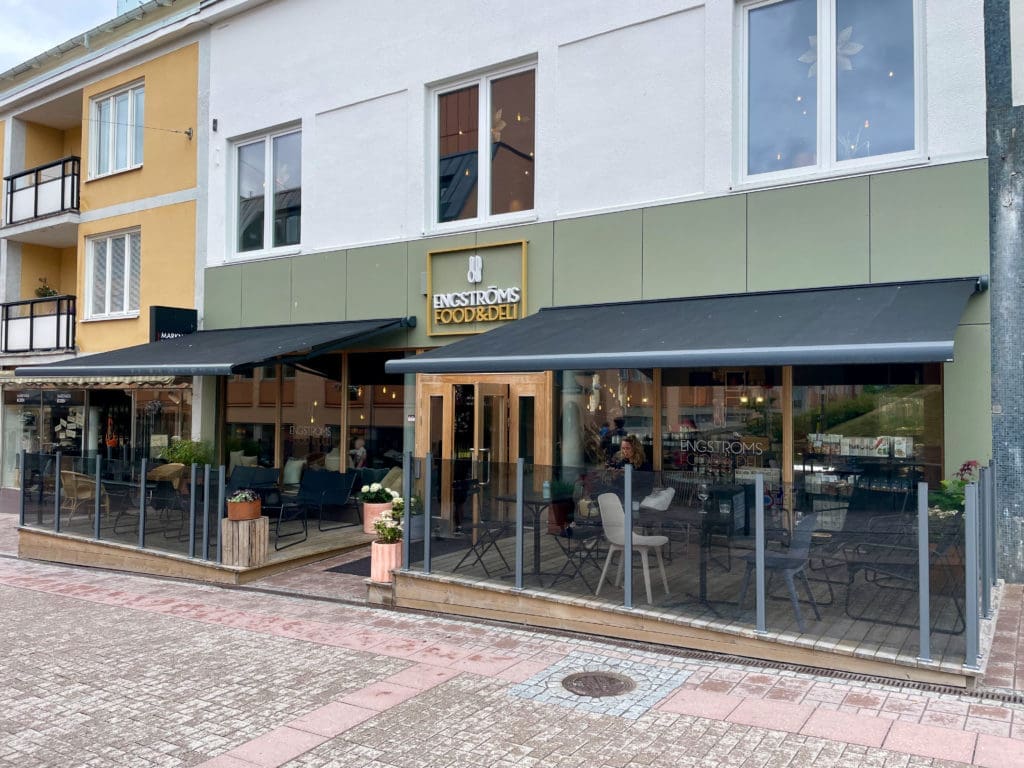
Sundsvall
After dinner, we headed for Sundsvall. Once in the city, we found that they also had a beast in the cityscape. In their case it was a small dragon. We thought they stole the idea from Östersund, but after googling a bit, we learnt that there was a big city fire in 1888. After the fire, the locals put dragons on the roofs to protect against all evil. Since then, the dragons have been a recurring theme in both art and events. From May to October, local artists exhibit their work in the streets and squares.

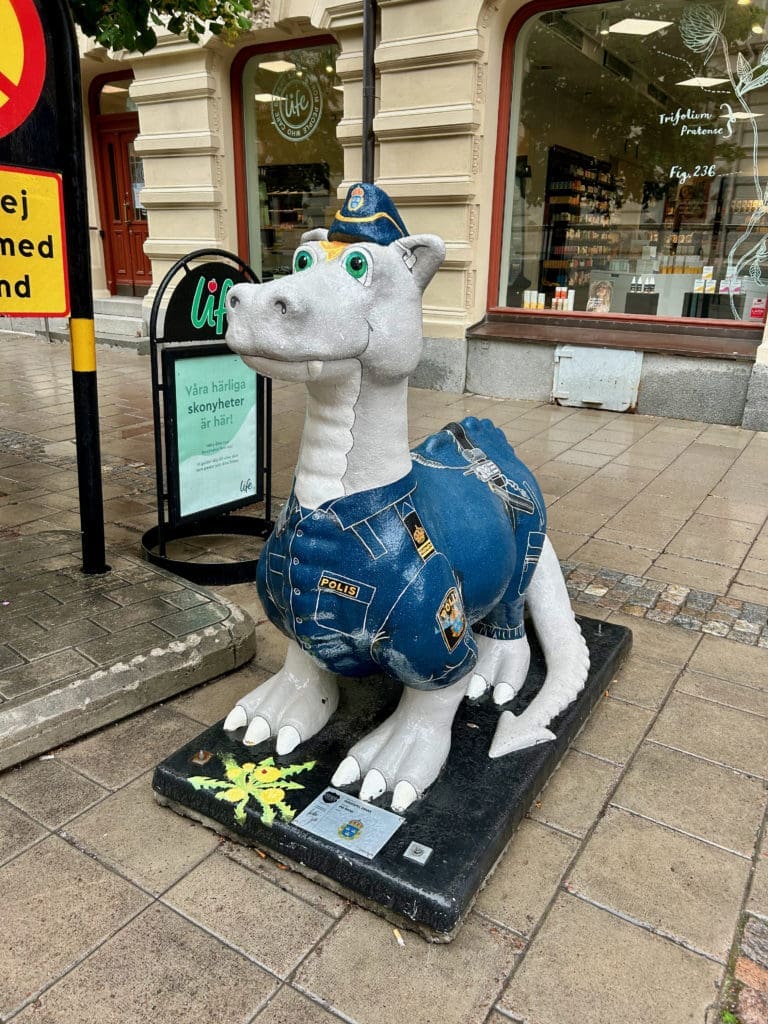

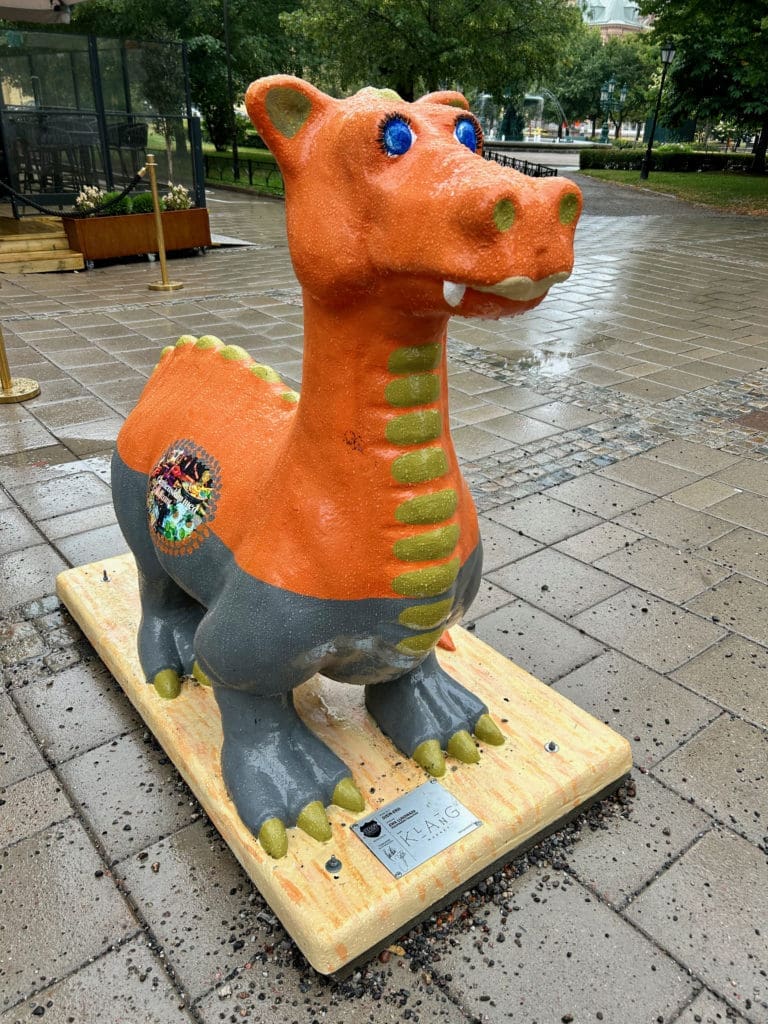

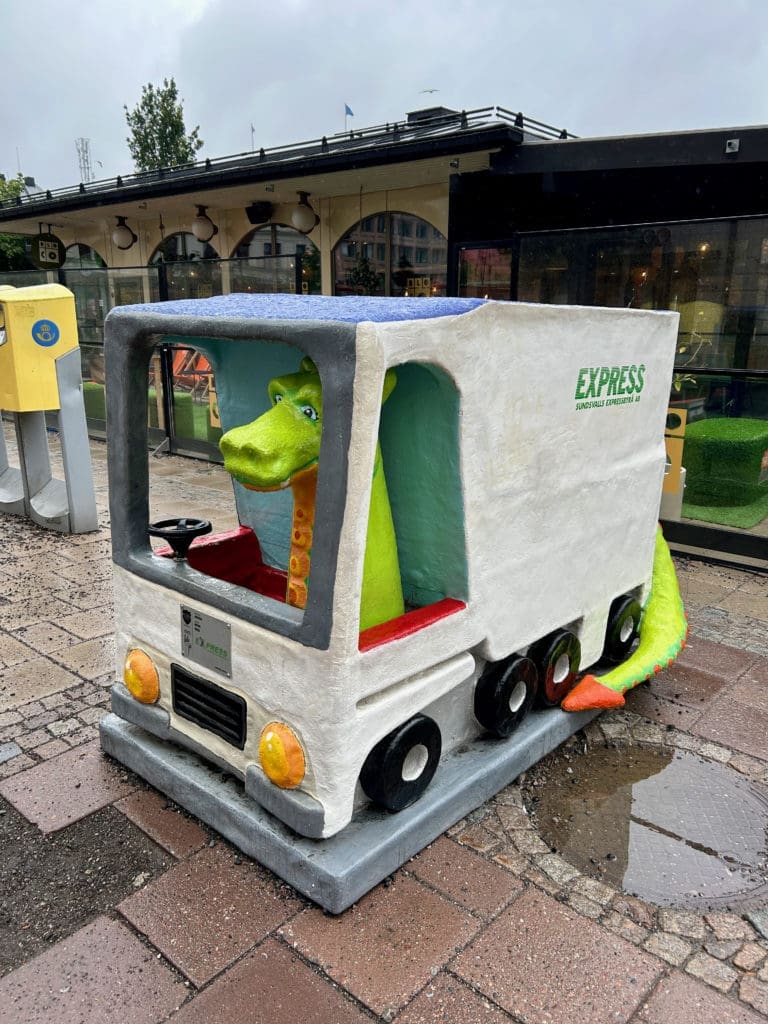
It started raining again so we sought shelter at the Chocolate House. It was a small cosy café that had, as the name suggests, an obvious chocolate theme. We chose a really good hot chocolate with chilli which was just what we needed.
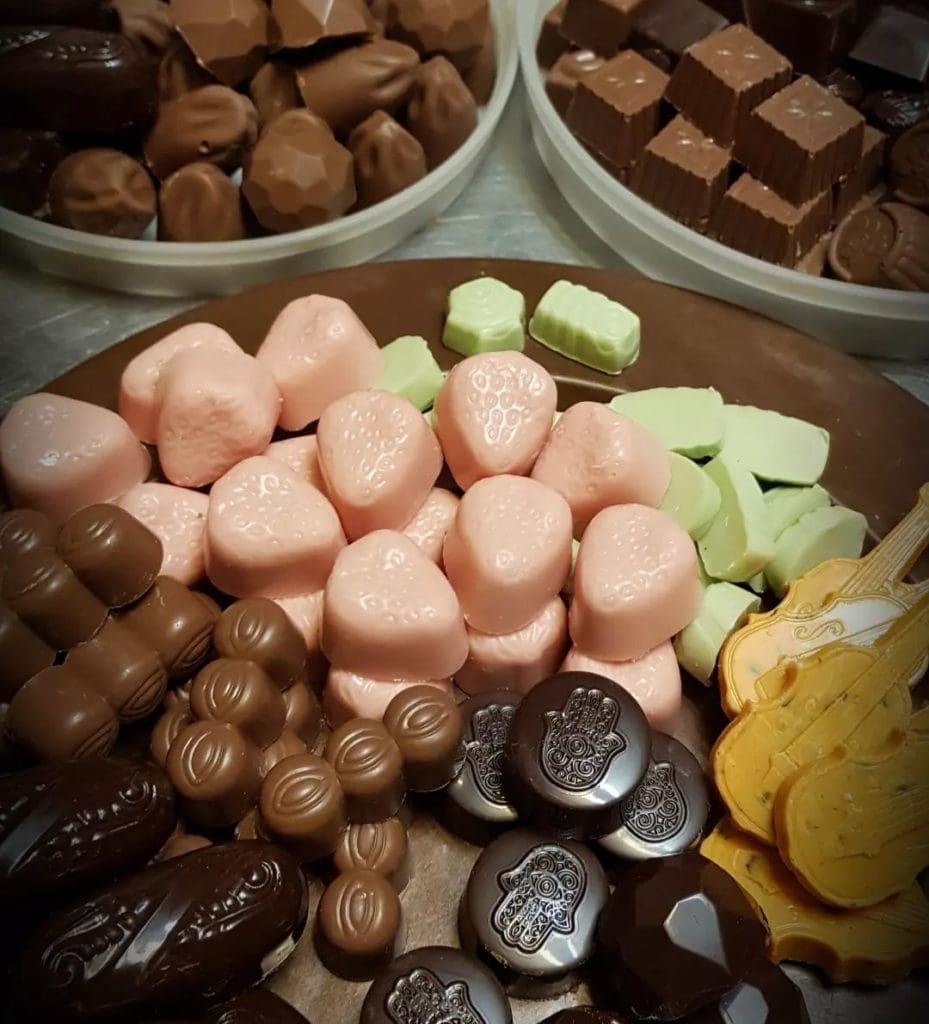


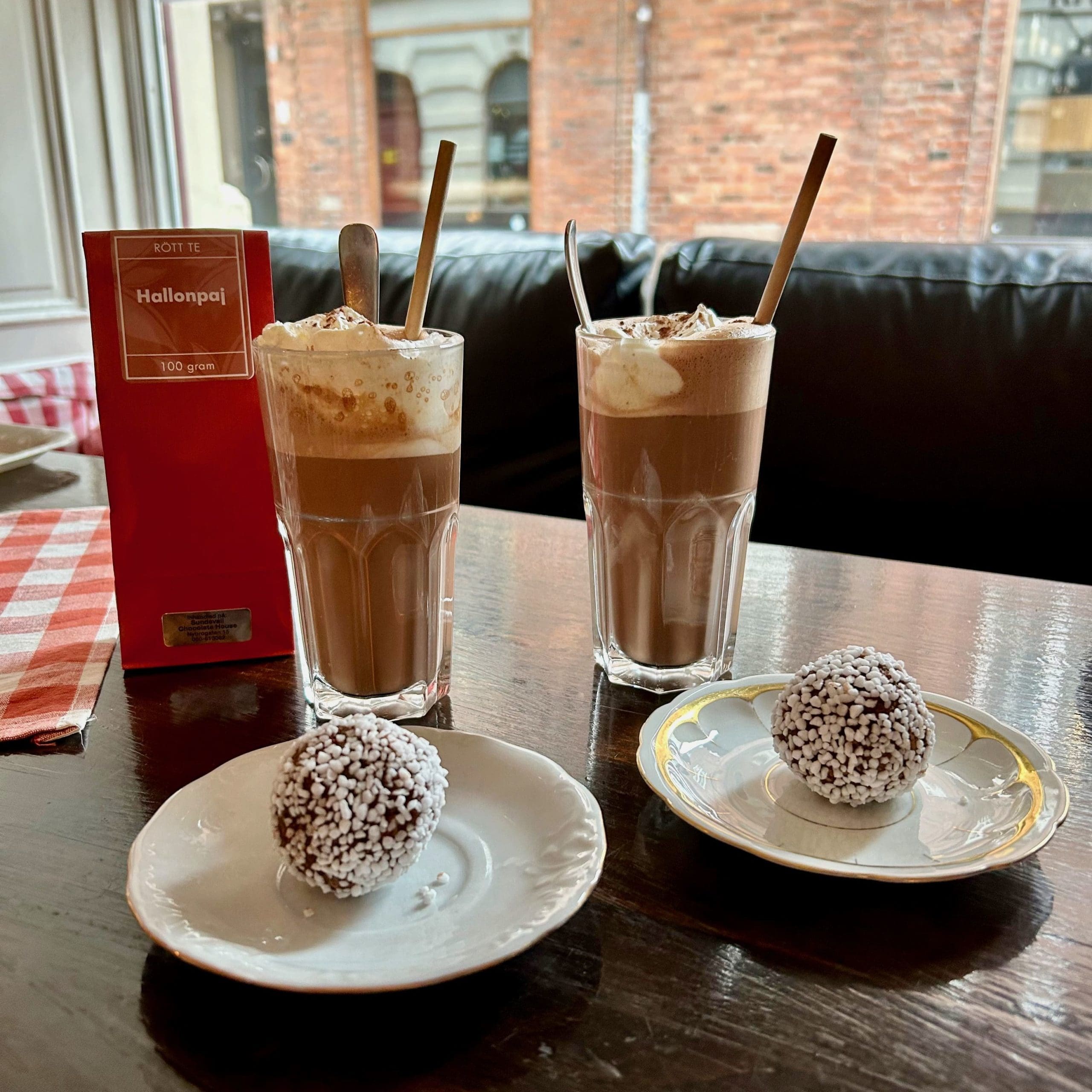
In the middle of the coffee, it stopped raining so we threw in the last of it and stormed off to the harbour promenade, which we still felt did best in the weather. As you can see in the pictures, the break did not last long.

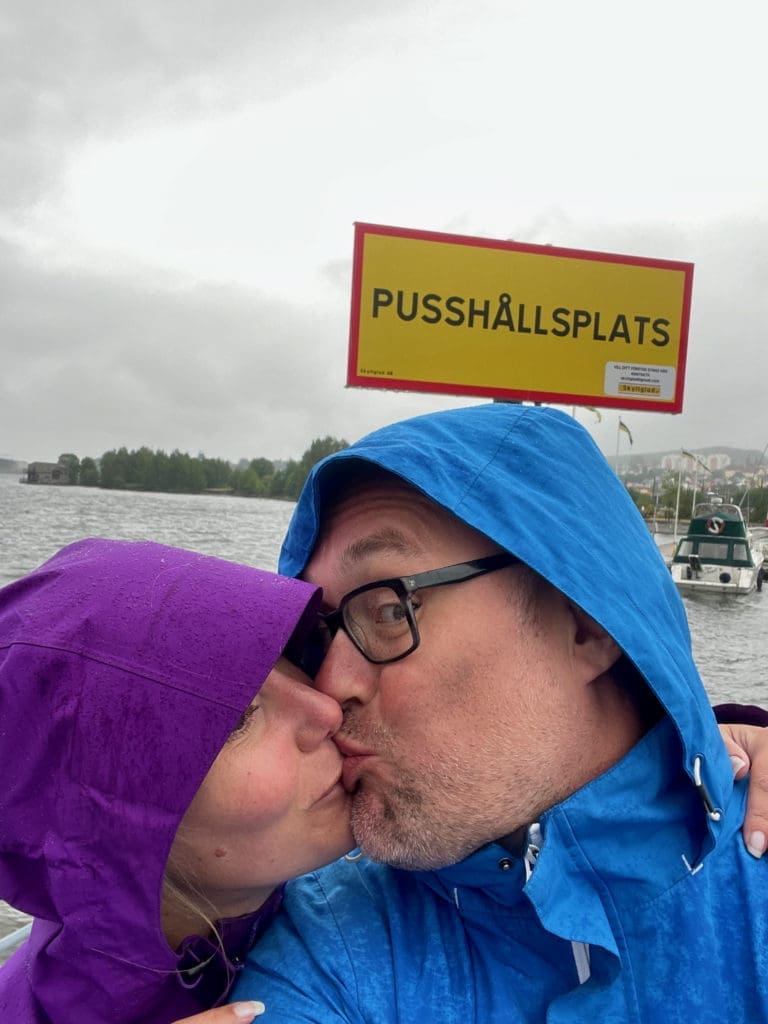
We also made a quick stop in Hudiksvall but as we were a bit behind schedule, we only took a photo of the boathouses in the centre of town.
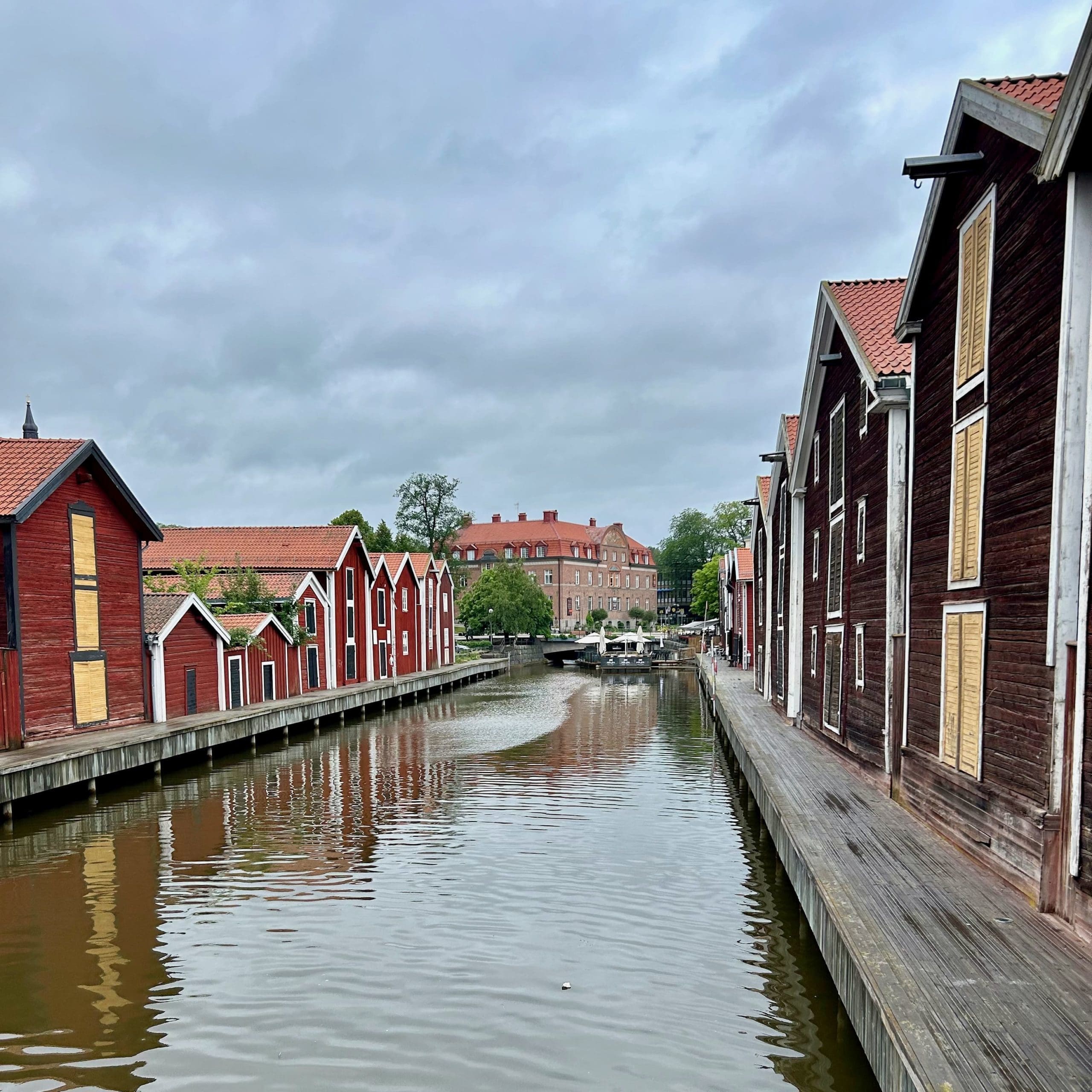
Söderhamn
For many years, I have tried to convince my wife of Söderhamn's excellence, but since she has a friend from Söderhamn who gave a different picture, it has been a bit of an uphill battle. In the end, however, I had to prove that I was not completely out and cycling, which was a bit of a revenge... 🙂.
Söderhamn is a small town, but despite its size it has a number of grand buildings. A small river runs through the town centre and out into the Baltic Sea. The town used to be known for its gunsmiths but today it is more like its neighbours with a lot of traditional basic industry. Population growth in the town centre has been unusually stable, with around 12,000 inhabitants over the last 100 years. The city has had several major fires and has also been destroyed by the Russians, which gives a very varied cityscape.
Several famous architects and industrialists have contributed to the rebuilding of the city. For example, the Ulrika Eleonora church was designed by none other than Nicodemus Tessin. The adjacent vicarage is now a centre for the boutique hotel who looked very nice.
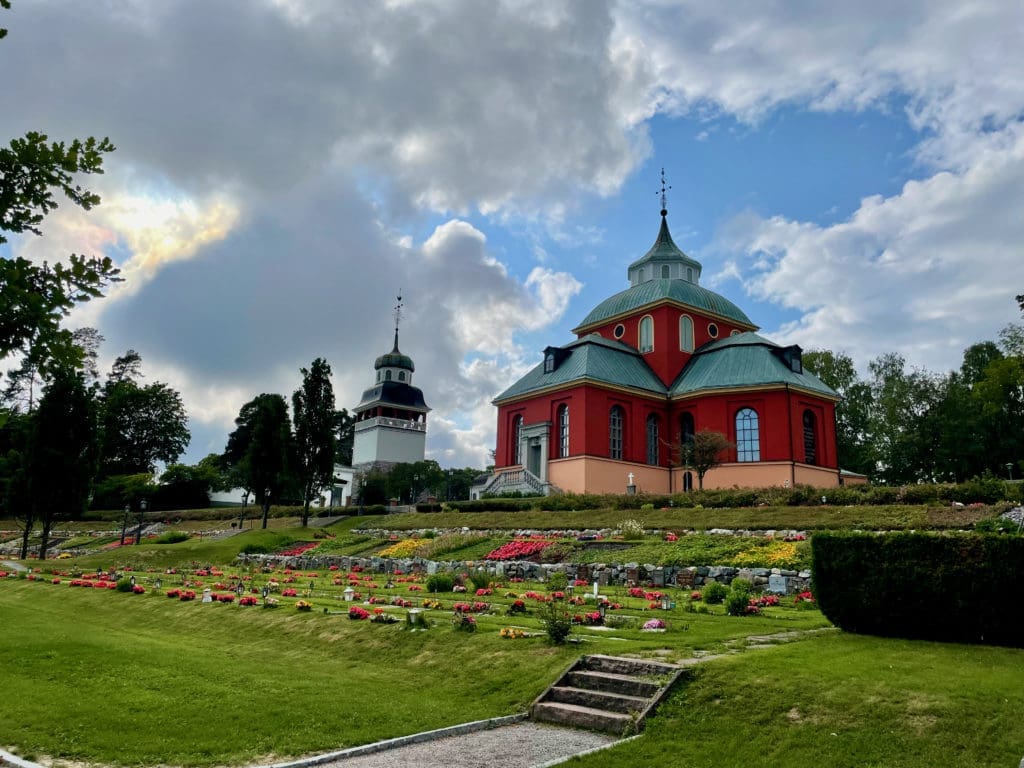
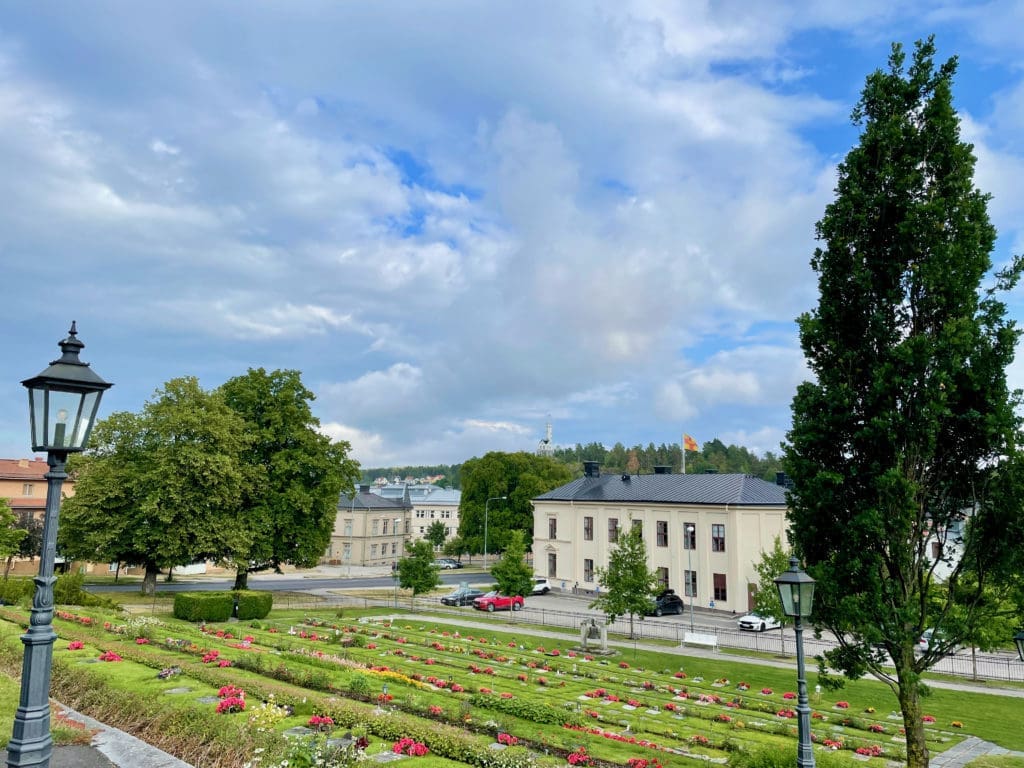
Opposite the church there is a park and on the other side of it a town hall which, after a fire, was restored in Dutch Renaissance style by Ernst Jacobsson. We completely missed that it was the back of the town hall that faced the park. At the front there is also an obelisk from the Stockholm exhibition with a portrait of Gustav II Adolf, who is the founder of the city.
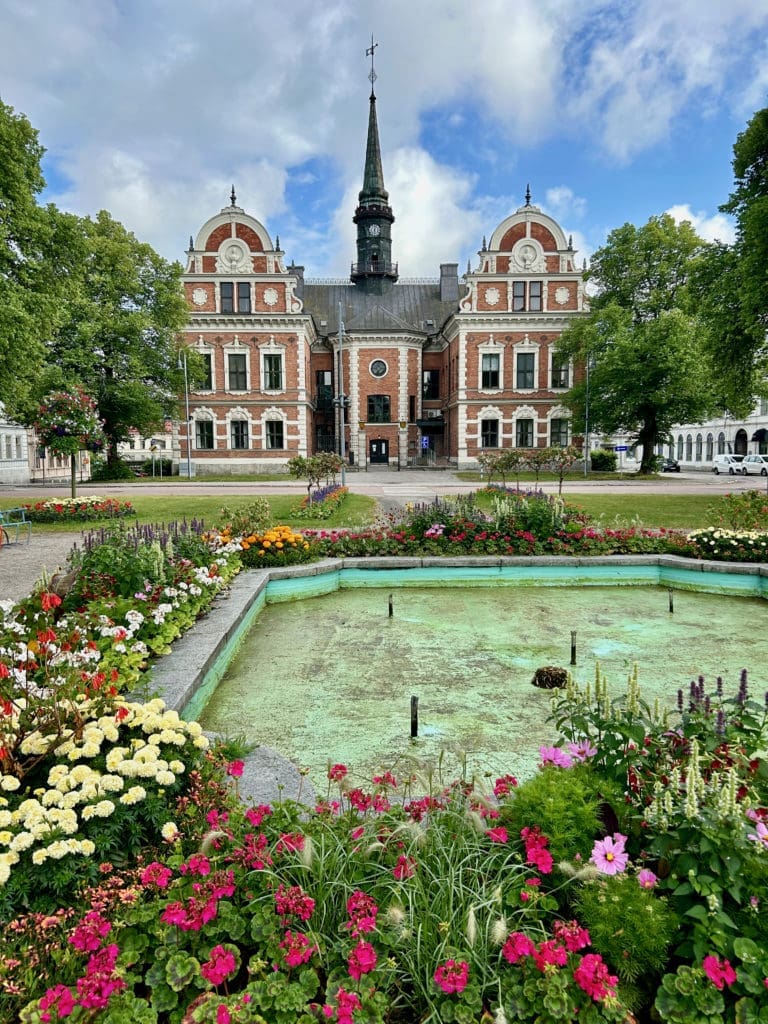
In addition to the town hall, there is also the Borrhuset, designed by Christopher Polhem. It was built for Söderhamn's Gevärsfaktori but is now a city museum.

Another well-known building is Oscarsborg, an observation tower on the eastern side of the mountain. The tower is a popular attraction, with a dance floor, mini-golf and an ice-cream parlour.
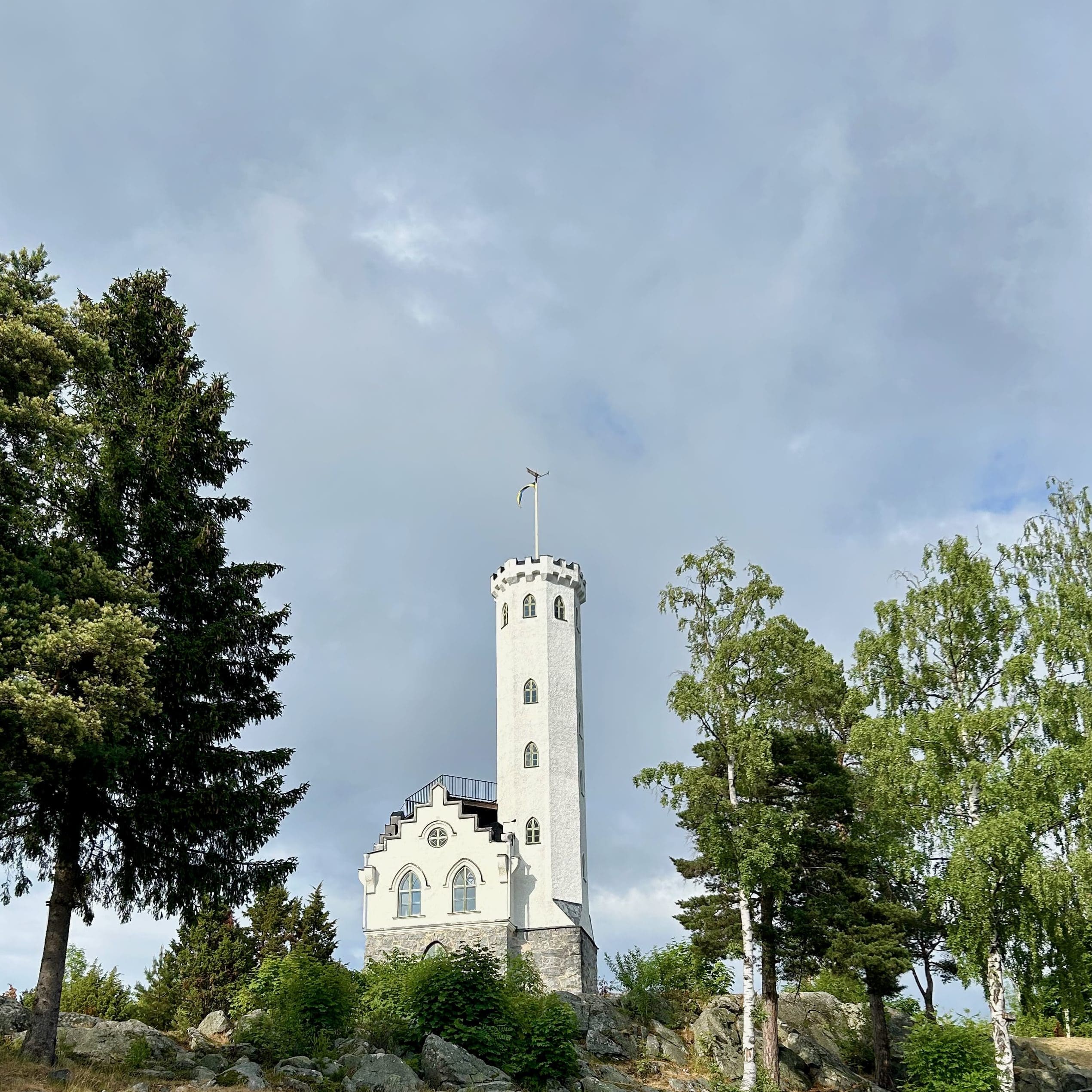

Gävle
We spent the night at the cosy Axmars Bruk B&B. We had actually planned to leave right after breakfast but the mill environment was so interesting that we didn't arrive in Gävle until lunchtime. Read more about Axmar Bruk here.
The first stop was a really good lunch restaurant, Runebergs kvarterskrog. Very good and good service! If you want to visit them, the tip is not to do it in the middle of the lunch rush as it is very popular.
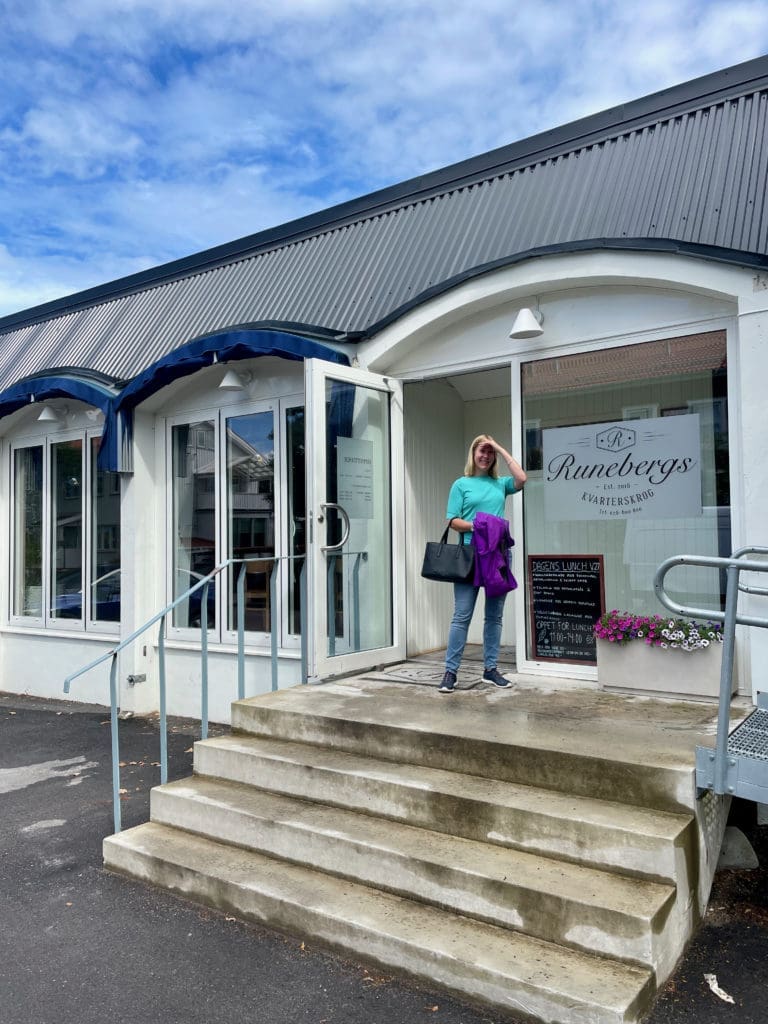
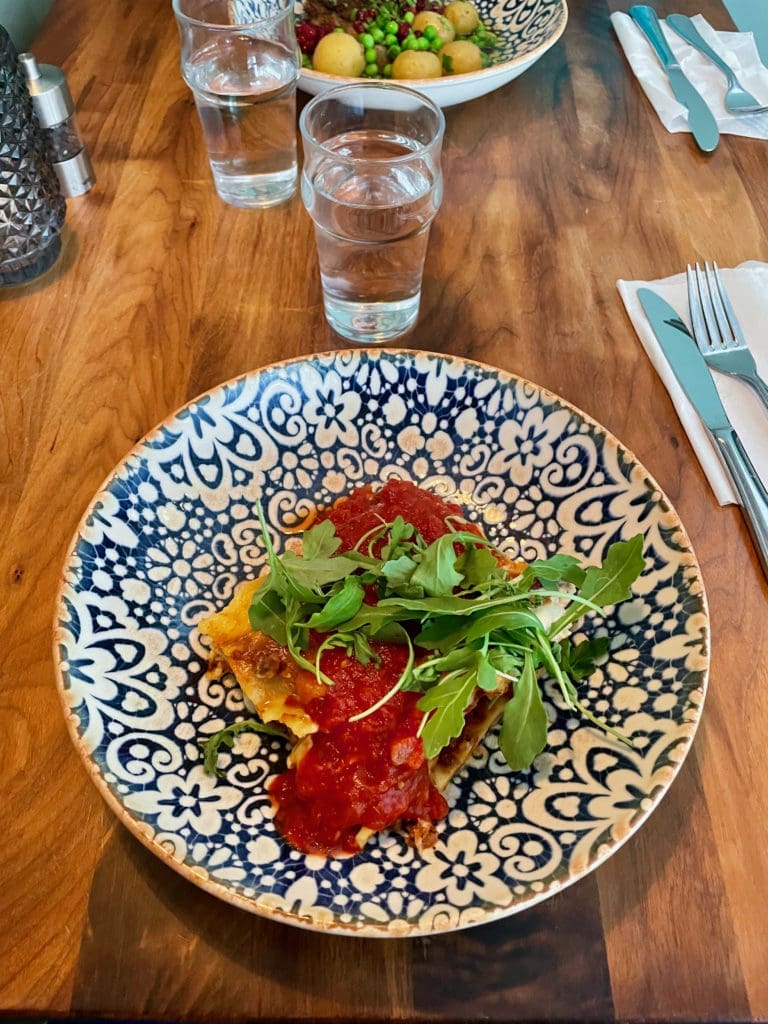
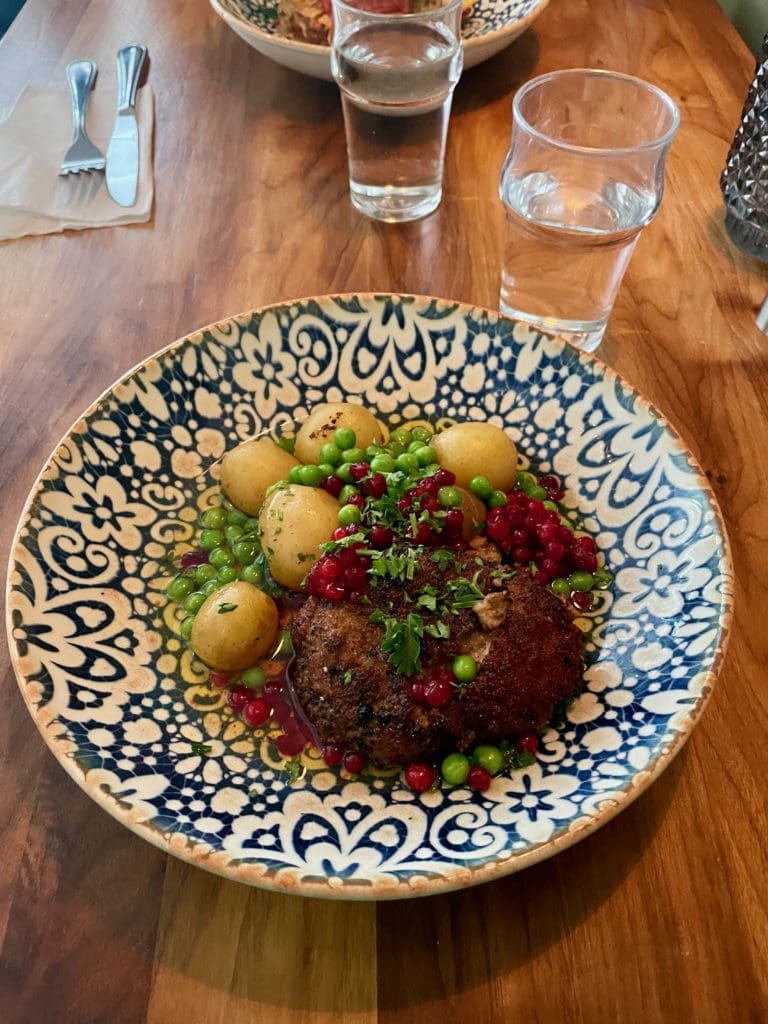
After lunch we took a walk in the old town but it started to rain again so we moved on to our next destination. You can read more about our next stop in Öregrund. here.

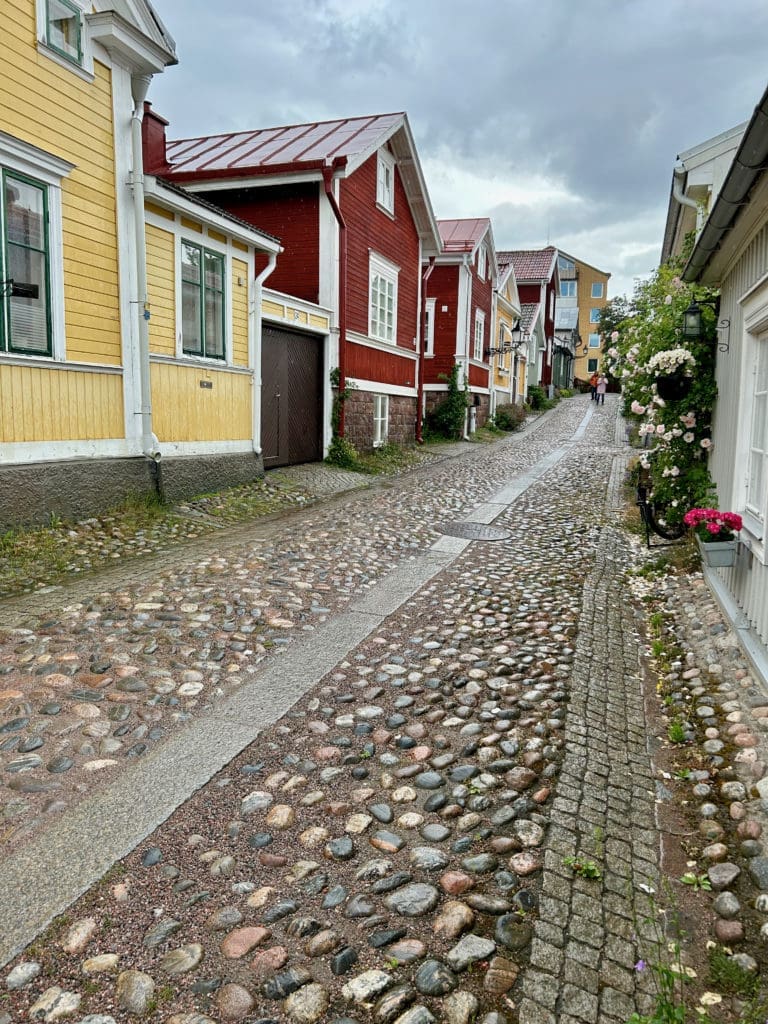

To summarise, our trip along the coast was heavily influenced by the weather. When there was a break, we took time to explore while we mostly sat in the car when it was pouring down. There are certainly reasons to come back to many of the cities when the whims of summer are more on our side.
